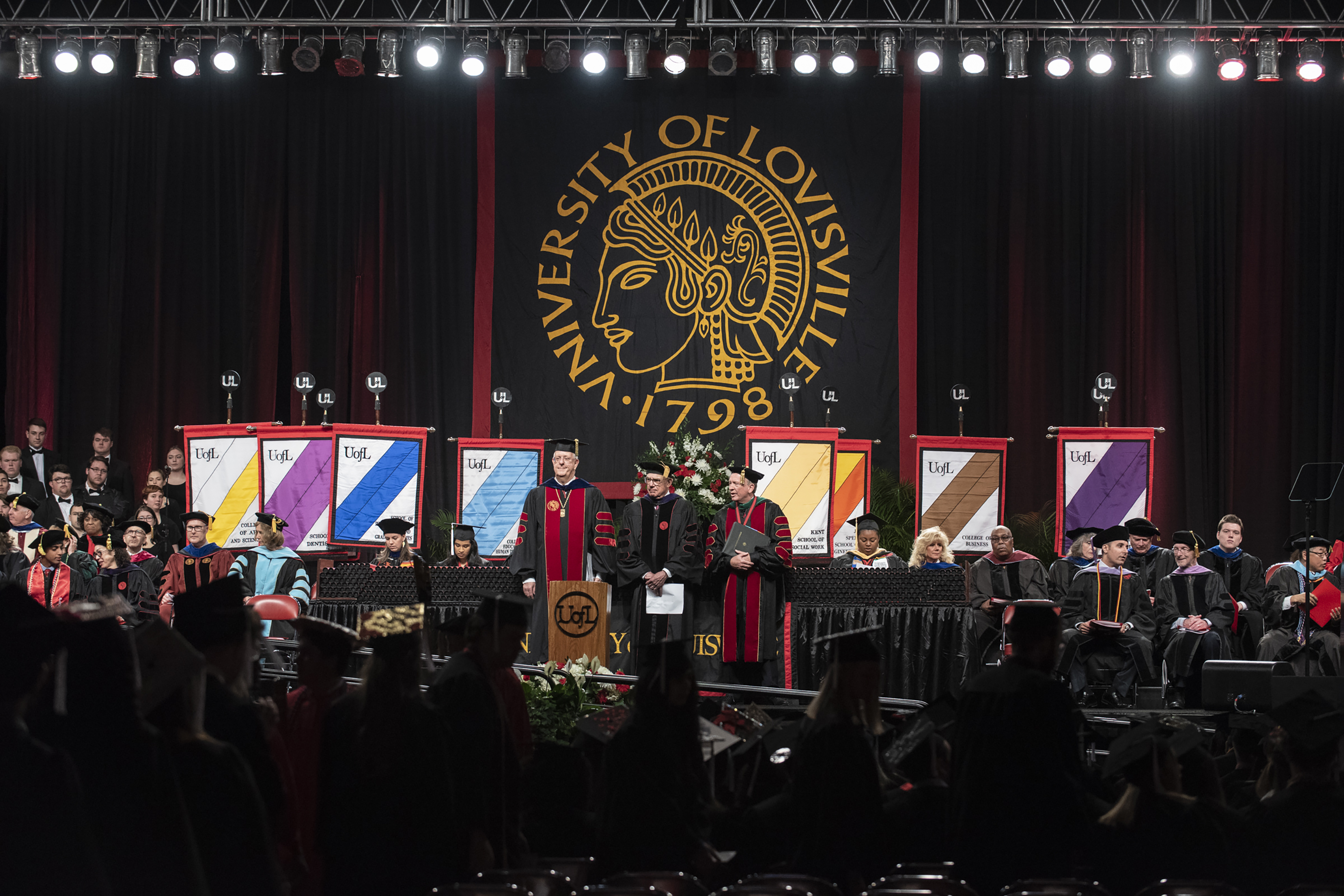
Studio Art and Design (MFA)
Define Your Vision
The MFA in Studio Art and Design (60 hours) prepares artists for professional careers through studio practice, art history and cultural studies. With close faculty mentorship, students can focus on one medium or explore multiple. Opportunities include teaching, internships, exhibitions and partnerships with local galleries and museums. Culminating in a thesis exhibition and written thesis, the program develops both artistic mastery and professional readiness.

Application Deadlines
Note: MFA applicants must also submit a portfolio and additional materials via SlideRoom. See full admission requirements below.
Course Catalog
Master of Fine Arts in Studio Art and Design
Unit: College of Arts and Sciences (GA)
Department: Art and Design
Program Website
Academic Plan Code(s): SAD_MFA
Program Information
The Hite Institute of Art and Design offers a Master of Fine Arts (MFA) in Studio Art and Design, a 60 credit hour program structured according to the guidelines established by the College Art Association (CAA). The curriculum adheres to rigorous professional standards, with a diverse range of courses and a faculty mentoring model designed to help students meet program objectives and graduate prepared to thrive in a multicultural, global economy.
This selective program provides students with generous access to faculty, ensuring individual attention and guidance. Faculty members respect students' artistic direction while challenging them to explore new avenues of creative discovery. Students can focus on one medium or combine various media under the mentorship of a faculty advisor. Courses are offered in ceramics, drawing, glass, painting, photography, printmaking, sculpture, mixed media, and new media.
The program encourages a multidisciplinary approach, challenging students to develop their creative practice in relation to cultural, social, philosophical, and ethical issues, while gaining a broad understanding of art’s role in society.
Students benefit from the Hite Institute's extensive resources, including multiple galleries on campus and downtown Louisville, partnerships with local art museums and galleries, and an active speaker and colloquia series featuring internationally recognized artists, curators, and gallery directors. The program emphasizes engagement with the wider arts community, offering students opportunities for joint projects and internships with local and regional cultural institutions. These partnerships strengthen connections between the university and the community, giving students a unique chance to participate in civic life.
All MFA students receive either a scholarship or a teaching assistantship.
Admission Requirements
Successful applicants to the MFA program in Studio Art and Design will have a strong academic background and commitment to art, including a thorough understanding of the principles of form, proficiency in various media and technical skills, as well as a fluency in language and discourse in historic and contemporary contexts.
The minimum requirements for admission are:
- A bachelor's degree in studio art from an accredited institution, preferably a BFA.
- At least 48 credit hours in studio art courses and twelve (12) credit hours in art history.
- A minimum undergraduate GPA of 3.0 on a 4.0 scale.
- A portfolio demonstrating technical and conceptual competency.
- International students must meet all criteria outlined in the University’s Graduate Catalog, including the English proficiency.
Students who do not meet the minimum requirements (e.g., those with a BA rather than a BFA) must address deficiencies by completing undergraduate courses prior to admission. These courses will not count toward the MFA degree. A minimum GPA of 3.0 must be maintained across all coursework, including any undergraduate courses taken to address deficiencies.
Application Requirements
Applicants to the MFA program must meet the general admission requirements of the College of Arts and Sciences. Specifically, applicants must:
- Hold a bachelor’s degree from an accredited institution with a minimum GPA of 3.0 on a 4.0 scale.
- Have completed an undergraduate major (or its equivalent) in a relevant field of study.
In addition to meeting the College’s general requirements, applicants must submit the following materials to the Graduate School:
- An online Graduate Application
- An application processing fee
- At least two letters of recommendation specific to the program, addressing the applicant's academic and/or artistic achievements and potential.
- Official transcripts of all college work.
The GRE is not required for the MFA program. However, applicants for whom English is a second language must submit proof of English proficiency. This can be done by submitting:
- Official TOEFL scores of 79 or higher on the internet-based test (IBT), or 213 or higher on the computer-based test (CBT),
- IELTS scores with a minimum overall band score of 6.5 on the academic module, or
- Duolingo scores of at least 105 overall.
Coursework Requirements:
Applicants must have completed a minimum of:
- 48 credit hours in studio art courses
- Twelve (12) credit hours in art history courses
Additional Materials for the Hite Institute of Art and Design:
Applicants must submit the following materials directly to the Hite Institute via SlideRoom (a $10 fee applies). Access the online SlideRoom portal here: hite.slideroom.com:
- A portfolio of 20 images demonstrating competence in both conceptual and technical skills;
- An Artist’s Statement (up to 500 words) relevant to the submitted artwork;
- A Statement of Intent (up to 500 words) outlining the applicant's educational and professional goals in the field of Art and Design;
- A resumé (maximum two pages).
Program Requirements
The MFA program requires a minimum of 60 credit hours, with at least 31 credit hours at the 600 level.
Upon entering the MFA program, students may choose between the three-year or the two-year accelerated track. Each student will select a faculty advisor/mentor with whom they will develop a personalized plan of study. In consultation with their mentor, students will select courses that align with their goals and ensure timely progress toward graduation. Course instructors will evaluate students' achievement and progress in each individual class. Additionally, students' progress will be reviewed in two required seminar courses.
Students' overall progress will be monitored by their faculty mentor, who will regularly assess their work and provide necessary information for the Director of Graduate Studies in Studio Art and Design. This information will be used to conduct an annual review for the Graduate School.
For students in the three-year program:
- After completing the first year and a minimum of 18 credit hours, and again after completing the second year and a minimum of 36 credit hours, students will undergo an MFA Review. This review will be conducted by a committee of at least three faculty members, with the student's mentor serving as the committee chair.
For students in the two-year program:
- The MFA Review will occur after the first year, upon completion of a minimum of 30 credit hours.
In both cases, students who receive a favorable evaluation will continue in the program and begin preparing for their thesis exhibition. Students who do not pass the MFA Review will be re-evaluated in the following semester. Two unsatisfactory reviews may lead to a recommendation for dismissal from the program.
Each MFA candidate will work closely with their mentor to develop a body of work for the thesis exhibition. In the final semester of study, students must demonstrate their artistic accomplishments through:
- A thesis exhibition,
- A written thesis,
- A final oral exam.
The thesis committee will evaluate the student's artistic achievements and determine their successful completion of the MFA program.
Required Coursework
| Code | Title | Hours |
|---|---|---|
| Graduate Seminar Requirements | 6 | |
ART 600 | Graduate Seminar (first semester) | |
ART 689 | MFA Seminar (third semester) | |
| Teaching, Internship/Service Learning, Professional Development | 3-6 | |
ART 696 | Teaching Internship I (second semester, prior to receipt of a GTA) | |
ART 697 | Teaching Internship II (third semester, taken after receipt of a GTA) | |
ART 698 | Internship in Studio Art / Service Learning (second semester) 1 | |
ART 688 | Professional Development (second semester) | |
| Studio Art Practice 2 | 9 | |
| ART 690 MFA Projects (second semester) | ||
| ART 690 MFA Projects (fourth semester) | ||
| ART 690 MFA Projects (sixth semester) | ||
| Studio Art Courses 3 | 21-24 | |
| ART 500/600 level | ||
| Art History and Art Theory Courses 4 | 9 | |
ARTH 642 | Theories & Methods in the Visual Arts (first semester) | |
ARTH 500/600 level | ||
500/600 level elective | ||
| Cultural Studies electives outside the Department | 6 | |
TWO (2) 500/600 level electives outside the department (Outside department electives must be determined in consultation with the mentor) | ||
| MFA Thesis Project | 3 | |
ART 699 | MFA Thesis Project | |
| Minimum Total Hours | 60 | |
Satisfactory progress toward the degree requires fulfilling several key requirements, including regular enrollment in graduate courses, meeting course requirements within specified time limits, and maintaining a minimum grade point average of 3.0.
- 1
Students who do not choose to teach must select two (2) credit hours of ART 698 instead of ART 696 in their second semester and take a three (3) credit hour studio course in place of ART 697 in their third semester.
- 2
ART 690 is required in the second, fourth, and sixth semesters.
- 3
Students who choose not to teach must select a three (3) credit hour studio course in place of ART 697 in their third semester.
- 4
A minimum of six (6) credit hours must be in Art History (ARTH), including ARTH 642, which is required and must be taken in the first semester. The remaining ARTH elective may be taken online or at another university, with the approval of the department chair.

Transform Your Creative Vision Into Your Career
Ready to turn your artistic passion into professional power? Join Kentucky's leading Art + Design program where creativity meets cutting-edge career preparation. Your future in the $1.1 trillion creative economy starts with one decision.
